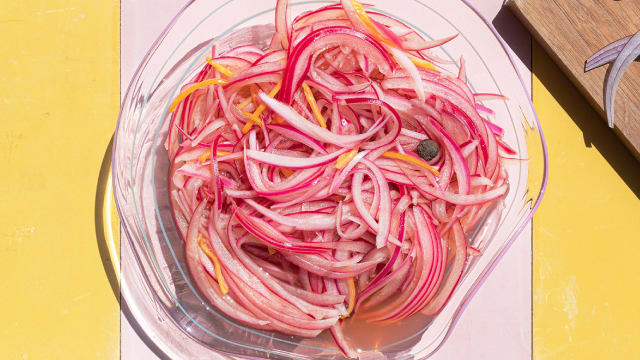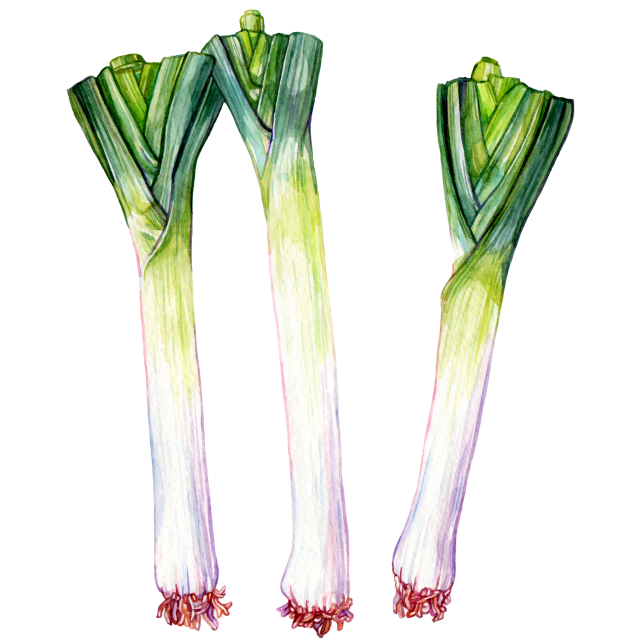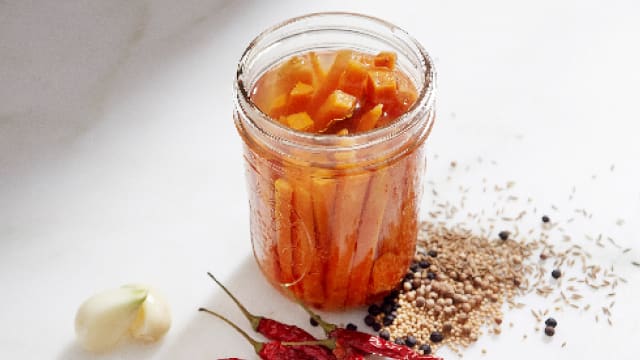Lacto Leeks

Lacto Leeks
Description
The leeks’ natural sharpness and umami are enhanced by fermentation—these are pungent pickles—and they bring an addictive, tangy depth to anything they’re combined with. Leeks contain fiber and several potent antioxidants, particularly kaempferol, which may have anti-cancer properties. Fermenting them makes this a great source for probiotics, promoting gut health and boosting immunity.
Ingredients
about 1 pint MAKES
- 2 lbs (1 kg) leeks, washed and dark green parts removed
- Fine sea salt
Directions
-
Step 1
Dice the leeks into roughly 1/4-inch (1/2-cm) pieces. Put a large bowl on your scale and zero it, then add the leeks, recording their weight. Weigh out 2.5% of the leeks’ weight in salt and add it to the large bowl, mixing it thoroughly and kneading the mixture with your hands so that the leeks begin to shed liquid. Keep kneading and stirring for a few minutes until the mixture is quite wet and a squeezed fistful drips readily. -
Step 2
Pack the leeks into your jar, using the handle of a wooden spoon or similar tool, leaving at least an inch of space at the top. Insert the weight and loosely lid the jar so gases can escape. Leave the jar on your kitchen counter overnight and check the liquid level the next day. It should fully cover the leeks. If it doesn’t, add a big pinch of salt to a little water and add that until there’s at least half an inch of water on top of the leeks. -
Step 3
Move the jar to a cool place (55˚ to 60˚F/12.5˚ to 15.5˚C) for about a month, checking it periodically to make sure the leeks remain covered in liquid. If evaporation lowers the water level, pour in a little salty water to top it up (the exact ratio of this tiny addition doesn’t matter; just make sure it’s salty). If you don’t have a spot that cool, expect these to be ready in 2 to 3 weeks, but check them regularly. Add these lacto leeks to sauces, vinaigrettes, dips, or anything else that wants a tangy, funky edge.
Explore Recipe Ingredients
About the author
More by Peter Barrett

Beet Salad
This simple salad is almost a quick pickle, using a bright vinaigrette to balance the beets’ earthy sweetness. A bowl of these enhances just about any meal.

Belizean Pickled Onions
This tangy, crunchy, and fiery red onion condiment from Belize brightens up sandwiches or salads

Braised Artichokes
Try this antioxidant-rich recipe of braised artichokes in white wine sauce and dressed in olive oil




